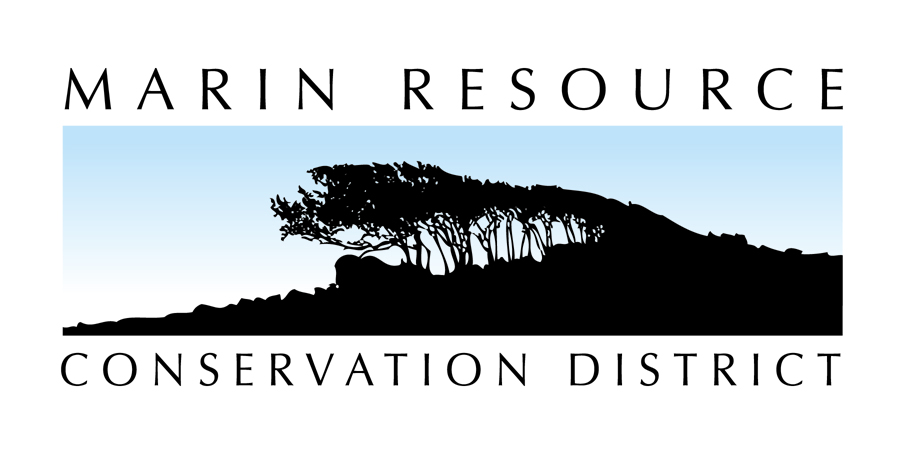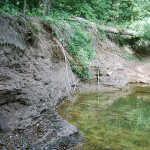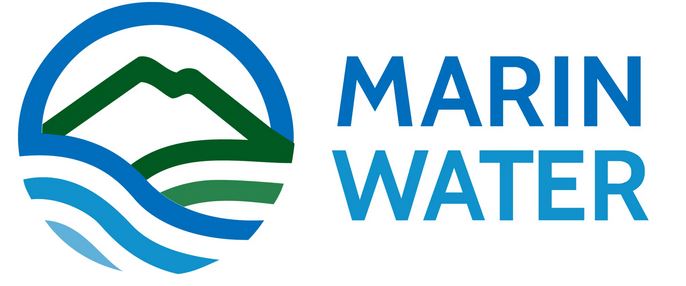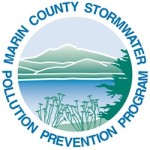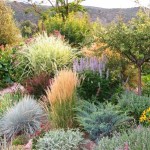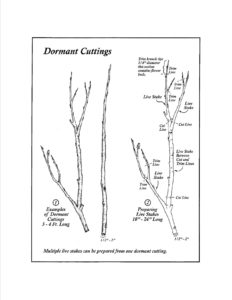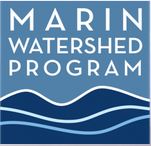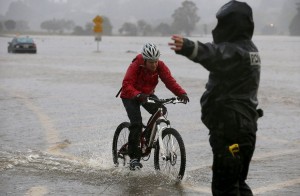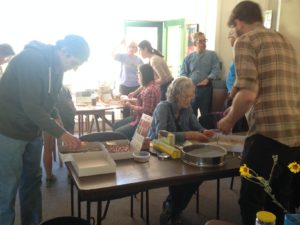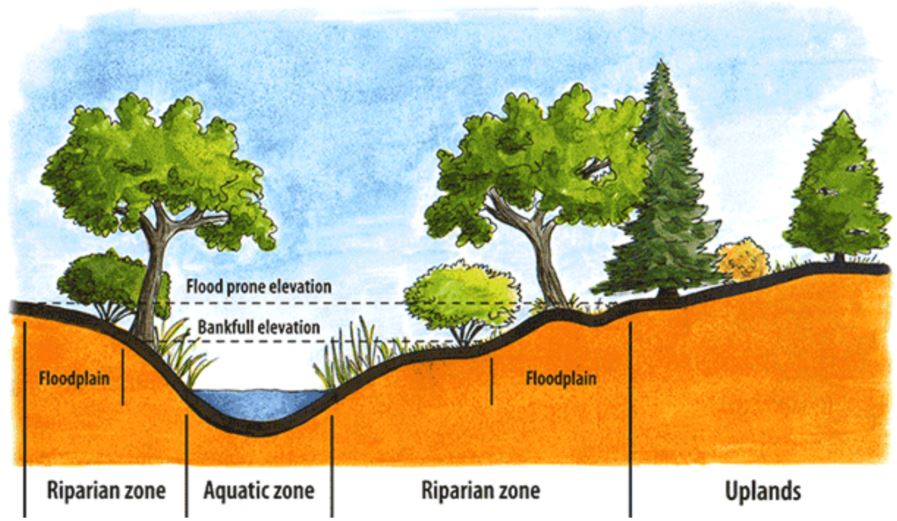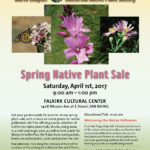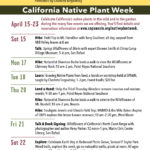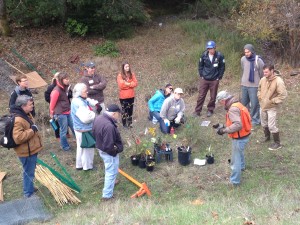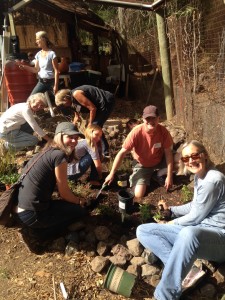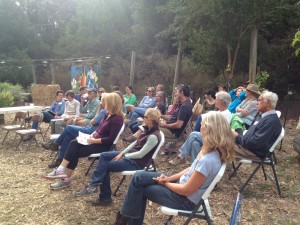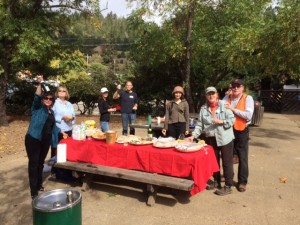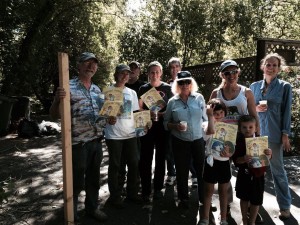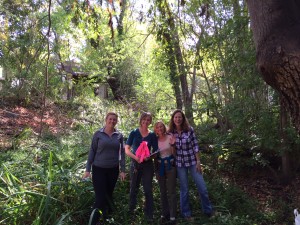Urban Streams Resources
Welcome to Marin
Marin County has put together a brief but comprehensive document for new residents in Marin called the, ‘Marin Homeowner Toolkit‘. It touches on the following topics:
-
-
- Sea Level Rise and FEMA
- Public Transit
- Renewable Energy
- Water Efficiency
- Zero Waste Marin
- Community & Volunteer Involvement
-
Before You Dig
“811 is the phone number you call before digging to protect yourself and others from unintentionally hitting underground utility lines. 811is the federally designated call before you dig number that helps homeowners and professionals avoid damaging these vital utilities. When you make the free call to 811a few days before you dig, you’ll help prevent unintended consequences such as injury to you or your family, damage to your property, utility service outages to the entire neighborhood and potential fines and repair costs.” Click HERE to learn more about this free service.
Any questions about urban streams management in Marin County? Want to inquire about any available native plants for targeted restoration actions that enhance salmonid habitat? Contact Program Manager Sarah Phillips.
A Basic Understanding of Salmon
The Sinuosity of Streams
Hydrology in Less Than 2 Minutes
Dog Waste Impacts Water Quality
Restoration Resources
Erosion Control and Restoration Supplies
Let’s Learn About Erosion!
Helpful Resources on Types of Erosion
In May of 2001, U.S. Army Corps of Engineers Ecosystem Management and Restoration Research Program created a helpful technical note, Live and Inert Facine Streambank Erosion Control, regarding live and inert fascines made from living woody plant material for the purpose of streambank erosion control.
Natural Erosion: Not all erosion is bad! It’s an integral piece of the functioning river ecosystem that is a geomorphic process which promotes riparian vegetation succession and allows for an overall dynamic habitat. You can check out this short video from the University of Wyoming Cooperative Extension Service.
Human-Induced Erosion: On the other hand, erosion can be caused and/or exacerbated anthropogenically (human-influenced) and can include troubling results for watersheds. Watch the following video to understand more and learn what can be done.
The natural or unnatural process of eroding or being eroded by wind, water, or other natural agents.
In Marin, erosion along creek banks is very common and can come in many forms; bank scour, bank slumping/land slides, bank undercutting, bed scour/head-cutting, lateral bank erosion and incision.
In Marin, when it rains, it pours and as the droplets hit the bare soil, water accumulates on the surface and increases runoff which takes soil with it. The more impermeable surfaces that exist (driveways, sidewalks, roofs), the more runoff that is created which in turn speeds up, taking soil with it. Think of it like the ‘snowball effect’, accumulating more and more soil when it comes in contact with bare ground while rushing to the nearest stream. When high volumes of water sheet off into the streams instead of recharging the water table on the landscape, the large amount of water runs quickly downstream, scouring the bed and banks as it goes.
A lack of vegetation on the landscape to slow the flow, spread the flow and sink the flow, the more issues that will arise in Marin’s watersheds. For this reason, landowners and land managers should protect areas of exposed soil with native vegetation (http://www.cnpsmarin.org/) and weed-free mulch (http://www.marinwater.org/rebates).
Erosion Control Supplies
Water Components & Building Supply, Inc. Located at 44 Simms St. San Rafael(415)-451-1780
- Straw logs and bales (certified weed-free rice straw)
- Silt fence
- Jute netting
- Sandbags (prefilled/empty)
- Gravel bags
- Snake bags
- Staples
- Wood stakes
- Sisal twine
- Rope
- Seed mixes
- Tarps
Native Plants
Work-Trade for Plants
If you’re in need of native plants but cannot afford the cost, email Preston Brown, Watershed Biologist with Salmon Protection and Watershed Network (SPAWN) for opportunities to volunteer in trade for plants. ONE hour of rewarding volunteer labor bears the fruit of TWO native plants, genetically specific to the San Geronimo Valley. Contact Preston to sign-up at preston@tirn.net and click HERE to find out about upcoming volunteer opportunities with SPAWN..
Bank Stabilization
Residents and land managers can stabilize creek banks through soil bioengineering. What is soil bioengineering and how DOES vegetation hold substrate (soil, sand, clay, gravel) and creek banks in place? Watch this short but VERY informative video from Mike Vukman with the Urban Creeks Council in the East Bay!
There are several options for approach when it comes to the complex issues of river or creek bank stabilization projects. FEMA’s “Engineering with Nature- Alternative Techniques to Riprap Bank Stabilization” highlights several basic alternative practices that have successfully been implemented. The case studies demonstrate the use of large woody debris (LWD), erosion control blankets, woody plantings, and more, focusing on the improved ecological values and reduced maintenance requirements instead of riprap.
Various Methods for Bank Stabilization
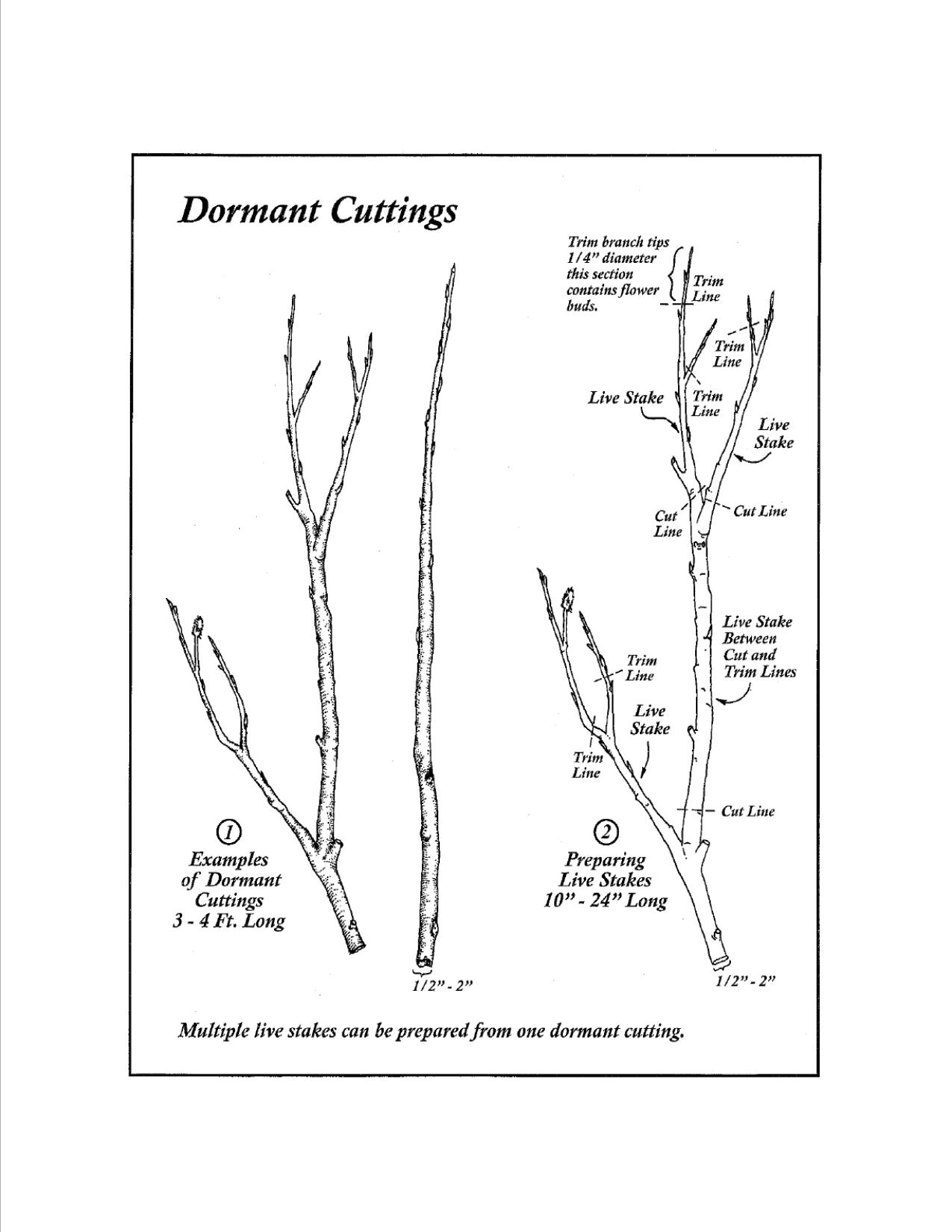
- Basic Rules of Thumb for Willow Staking
- Live and Inert Facine Streambank Erosion Control
- Soil Bioengineering
- Willow Planting, Staking, Wattling
- Learn more about willows, specifically in Marin HERE!
- A Great overview and how-to document from Oakland regarding the use of plants to stabilize your creek bank!
- Installing Soil Bioengineering: How to Succeed by Dr. Ann Riley
Plans, Assessments, and Guides
To mitigate the effects of the reservoirs on the creek habitat, Marin Water is implementing a comprehensive, long – term effort of actions to be taken in order to enhance the habitat of the creek for the benefit of coho, steelhead, and shrimp over a ten year period. In 2011, Marin Water completed a new watershed stewardship plan to guide its course of action into the future. Please click on the Lagunitas Creek Stewardship Plan to view the document.
Large Woody Debris (LWD) left in the streams include a multitude of benefits to the overall health of a watershed. LWD include trees, rootwads, logs, large branches which enable the following;
- Contributes organic nutrient input for benthic macroinvertebrates (mayflies, stoneflies and caddisflies) which in turn feed the fish
- Creates deep, cool-temperature scour pools that act as fish refuge during high flows in the winter and low flows in the summer
- Adds overall complexity to the system
- Interfaces and dissipates velocity of flows during peak rain events which creates refugia and slows the flow enough to allow spawning gravels to deposit upstream of the wood structure(s)
- Provides refuge from predation
- Catches salmon carcasses that will provide nutrients to the floodplains for enriched riparian growth
- Click HERE to learn more, ‘Maintaining Wood in Streams: A Vital Action for Fish Conservation’!
Marin Water has a Memorandum of Understanding with the County of Marin, Marin County Open Space District, CA Department of Parks and Recreation, National Park Service and Marin RCD for leaving woody debris in riparian areas of the Lagunitas Creek Watershed which can be viewed HERE. To watch an informational video on LWD for habitat purposes, see below!
Marin County Stormwater Pollution Prevention Program (MCSTOPPP) has a created a multitude of resources to help guide landowners in how to steward their lands and watersheds. Please select any of the following documents to learn more;
- Fish-Friendly Guide for Marin Residents
- Go Native: Using Native Plants for Your Yard, Patio & Creek
- Repairing Creek Bank Erosion
- Fire Resistant Plants
Additional Guidance Materials
- San Geronimo Creek Watershed Documents
- CA Riparian Habitat Restoration Handbook, second edition 2009, by River Partners
- Design Report for SGV Landowner Assistance Program by Stillwater Sciences
- Gardening Success with CA Native Plants in the North Bay
- Guidance on creek cleaning, working in or around creeks and tree trimming in preparation for rain events; Stream Maintenance Guide_2018
- Large Woody Debris, Integrating Engineered Log Jam Technology into River Rehabilitation by Tim Abbe.
- Marin Water Resources relating to Stinson Beach, Bolinas Lagoon, and Easkoot Creek
- Recovery Plan for CA Freshwater Shrimp
- Santa Cruz County Stream Care Guide
- Santa Cruz County’s Required Riparian Setbacks
- Soil Bioengineering (Willows)
- Sonoma County’s Required Riparian Setbacks
Vegetation Management
To inquire about any available native plants for targeted restoration actions that enhance salmonid habitat, email Sarah Phillips at Sarah@marinrcd.org.
Willows
Willows can be used for a plethora of things but most importantly, they can be used in restoration in the following ways;
- Grade control
- Bank stabilization via soil bioengineering
- Erosion control
- Native riparian vegetation which provides an increase in canopy cover, food supply, nutrient cycling and dissolved oxygen. Riparian vegetation also provides diversity of wildlife habitat, riparian complexity and migratory corridors and improved water temperatures.
If you would like to learn more about willows or how to identify common willows in Marin, click HERE for a valuable resource and review the RCD’s Bank Stabilization page HERE! As well, to review a series of resources with how-to guidance on using willows for stream bank stabilization and erosion control, click on any of the resources listed below:
- Basic Rules of Thumb for Willow Staking
- Live and Inert Facine Streambank Erosion Control
- Soil Bioengineering (watch the video on the Bank Stabilization page)
- Willow Planting, Staking, Wattling
- Learn more about willows, specifically in Marin HERE!
- A Great overview and how-to document from Oakland regarding the use of plants to stabilize your creek bank! Click HERE.
Drought Tolerant Landscaping (Xeriscaping)
The average American household uses 320 gallons of water a day. 1/3 rd of that goes toward landscaping and gardening. With CA in a severe drought, we all need to be more aware of our water usage. There is no need to have an ugly brown lawn when you can have a delightfully beautiful xeriscaped property (drought-tolerant landscape). See the following resources so you can begin enjoying a lovely landscape while using minimal water for irrigation;
- Sustainable Landscaping in California through UC Cooperative Extension, click HERE
- Mostly Native’s Nursery in Point Reyes Station has information and a plant list regarding drought-tolerant landscaping, click HERE
- CA Native Plant Society’s Marin Chapter has great resources too, click HERE
Local Nurseries
There are so many local nurseries that provide native plants for Marin County residents. To check out which one(s) are closest to you with website and contact information, click HERE.
University of CA Cooperative Extension’s Master Gardeners published a document for the North Bay titled, Gardening Success with CA Native Plants, Click HERE.
Work-Trade for Plants
If you’re in need of native plants but cannot afford the cost, email Preston Brown, Watershed Biologist with Salmon Protection and Watershed Network (SPAWN) for opportunities to volunteer in trade for plants. ONE hour of rewarding volunteer labor bears the fruit of TWO native plants, genetically specific to the San Geronimo Valley. Contact Preston to sign-up at preston@tirn.net and click HERE to find out about upcoming volunteer opportunities with SPAWN.
Plants Talk!
“A new study conducted by Dr. David Johnson at the University of Aberdeen found that plants actually communicate with one another through the soil. The study shows that when vegetables are infected with certain diseases, they alert other nearby plants to activate genes to ward off the disease when it heads their way. The key to this communication is a soil fungus that acts as a messenger. Soil fungus and certain plants have a symbiotic relationship, according to the research team, who shared their findings with The Economist. The plants deliver food and the fungus delivers minerals. But now it turns out the fungal hyphae, which creates a network in the soil that connects the various plants, plays another essential role as a messenger”– The Economist. Click HERE to learn more.
Living with Eucalyptus
Many of us that live in the Bay Area, live with Eucalyptus. Although the leaves have allelopathic compounds (naturally-produced chemicals that suppress vegetation growth), there are plants that are native to CA that can withstand the toxins. As you remove the leaf litter for fire protection, consider planting the following plants to help reduce erosion and maintain vegetation in and around the trees. Click HERE to review the plants!
Landowner Assistance Resources
Below is a plethora of resources created and available through Marin County’s Landowner Assistance Program. Click on any of the following resources below to learn more;
- Native Landscape Plan
- Benefits of Riparian Native Plants
- Planting Zones, Installation and Invasive Plant Control
- Salmon Creek Water Conservation Program (applicable elsewhere)
- Salmonid Life History
- Local, State and Federal Permit Overview
- Stormwater Retention
- Tree Planting Details
- General Online Resources
Non-Native Invasive Plants
Newer to Marin with the potential to cause BIG unprecedented issues is the Japanese knotweed (Fallopia japonica). Please contact Sarah Phillips Sarah@marinrcd.org or David Lewis at Djllewis@ucanr.edu to inform them of any sightings. You may also view this FACT SHEET to learn more.
THE WEED WORKERS’ HANDBOOK A Guide to Techniques for Removing Bay Area Invasive Plants by The Invasive Plant Council and The Watershed Project is a great resource to check out HERE.
To learn about the negative impacts that English Ivy (Hedera helix) inflicts on watersheds and your property, Click HERE.
To learn about the negative impacts that Japanese Knotweed (Fallopia japonica) inflicts on watersheds, your property and the riparian corridor, Click HERE.
Landscaping Septic and Sump Tank Areas
Proper plant choice for landscaping in the vicinity of onsite wastewater systems is a concern for many property owners. The key is to select plants that will satisfy landscaping needs while not harming the function of the system. Click HERE to view a list of appropriate plants to plant in these sensitive areas on your property. This document was created by the County and revised by the Marin RCD, per request.
Additional Resources
- Mitigating Greenhouse Gas Emissions through Riparian Revegetation just released November, 2015 by UC Cooperative Extension
- UCCE’s Forest Stewardship, Series 10, Riparian Vegetation, Click HERE
- MCSTOPPP’s list of Home & Garden Resources are plentiful and provide guidance around ‘Slow it Spread it Sink it’ projects, Integrated Pest Management and Rainwater Catchment, Native Plants, etc… Click HERE to download their resources.
Other Resources
Fires
FIRESafe Marin has a multitude of resources available on their website including;
- Fire Safe Landscaping
- Getting Ready for Fire Season
- How Safe is Your House
- And More…
Marin Wildfire Prevention Authority (MWPA) is a collective of fire organizations across Marin County coordinating a target effort to reduce the risk of catastrophic wildfires. They recently published their Marin Community Wildfire Protection Plan!
In light of the firestorms that ravaged through the North Bay in October 2017, the Napa RCD has provided a helpful list of resources to look to for Best Management Practices, mulching, seeding, etc… Click HERE to access those resources.
In MCSTOPPP‘s Go Native: Using Native Plants for Your Yard, Patio & Creek, there’s a section about Fire Resistant Plants.
Marin Watershed Program and Local Watershed Groups
Marin’s Watershed Program
Marin County’s Department of Public Works has created a useful tool to learn about the watersheds in Marin County. The Marin Watershed Program provides a framework to integrate flood protection and environmental restoration with public and private partners to protect and enhance Marin’s watersheds. The website includes an array of:
- Watershed Maps
- Watershed Education
- Watershed Fact Sheets
- Work Group Meetings
- Flood Control Information
- Fish Passage Program
- Tide Information
- And MORE!
Click on any of the following watershed groups to go directly to their webpage:
- Friends of Corte Madera Creek Watershed
- Gallinas Watershed Council
- Marin Conservation League
- Mill Valley StreamKeepers
- Marin Water (formerly Marin Municipal Water District)
- Miller Creek Watershed Stewards
- San Geronimo Valley Planning Group
- San Geronimo Valley Stewards
- Sleepy Hollow Homeowners Association
- SPAWN (Salmon Protection and Watershed Network)
- Watershed Alliance of Marin
Stormwater Management
BlueBarrel Rainwater Catchment Systems also provide hands-on workshops and online tutorials that show you how to set up your stormwater management system, so why wait? Visit their workshop page HERE!
Marin County Stormwater Pollution Prevention Program (MCSTOPPP)
This unique department with Marin County conducts many services for Marin’s residents and watersheds. Their website includes a plethora of resources to learn from and can be viewed by clicking HERE. Additionally, if you’re looking for tips on your home and garden from MCSTOPPP, they have a bountiful amount of resources that can be found HERE. You can reach their Outreach Coordinator, Angela Clapp Aclapp@marincounty.org for more information.
Flooding
See Emergency Projects tab.
WATER CONSERVATION
Rebate Programs
As of October 2014, Marin Water is offering limited time rebates on eligible water conserving products! Products include;
- organic mulch
- rain barrels
- pool covers
- hot water recirculating systems
- laundry-to-landscape system components
Click HERE to learn about these products.
The North Marin Water District is offering residential customers a cash incentive for removing automatically irrigated lawn area in their landscapes and replacing with District approved, low water use planted landscapes. The NMWD incentive will pay you up to $50 per 100 square feet of lawn area. The incentive is limited to $400 for single family dwellings, $100 for townhouses or condominiums, and $50 for apartments. To find out more about this Cash for Grass Program and others that NMWD is implementing to save on water, click HERE. To fill out an application for this program, click HERE. As well, if you reside in the Marin Water’s District, then click HERE to learn about their rebate programs to help you conserve both water and money!
Rainwater Catchment Systems
By collecting rainwater, you serve as an environmental steward, are prepared in case of an emergency and you save money while nourishing your plants.
Speaking of emergencies, check out how San Francisco uses cisterns in the name of tackling emergencies such as fires in the city!
On Blue Barrel’s Rainwater Catchment Systems’ website (Click HERE), you can learn how to site your system, calculate the amount of rainwater that can be harvested and order your very own RainKit! They make it too easy not to set up your own system. They also provide hands-on workshops and online tutorials that show you how to set up your system, why wait? Visit their workshop page HERE!
Rain Gardens
If you want to learn more about rain gardens and how to construct them, you should purchase Creating Rain Gardens Capturing the Rain for Your Own Water-Efficient Garden by Cleo Woelfle-Erskine and Apryl Uncapher. It includes information on:
- ephemeral pools
- bioswales
- living roofs
- permeable patios
- rain barrels
Rain Gardens Save Coho Salmon!
Laundry to Landscape
Graywater is water from bathtubs, showers, bathroom sinks, washing machines, and laundry tubs. Graywater does not include waste water from toilets, urinals, kitchen sinks, dishwashers, photo lab sinks, or water from soiled diapers. It is not reclaimed water distributed through “purple pipes.” Graywater can be diverted from the sewer or septic system and used for landscape irrigation and constructed wetlands. The 2013 California Plumbing Code (CPC) classifies graywater systems based on construction and volume. Different requirements govern each system.
Marin County allows the reuse of graywater for irrigation landscapes in effort to conserve water. Click HERE to view their Fact Sheet on their laundry to landscape requirements including permitting information and associated fees.
Permitting Guidance
PERMITTING GUIDANCE
Marin County offers free assistance at monthly project coordination meetings to review and guide projects through the environmental and regulatory permit process. Click HERE to find out how to get on the agenda and speak to the regulatory agencies yourself!
PERMITS & ASSOCIATED FEES
- 1600 Lake and Streambed Alteration Agreement with Department of Fish and Wildlife (DFW): Application, Fee Schedule, and Instructions
- Army Corps of Engineers (ACOE) permitting information, click HERE
- 401 Certification Application information with SF Regional Water Quality Control Board (RWQCB): Click HERE, Fee Calculator
- California Environmental Quality Act (CEQA): Information on CEQA, Guidelines and Statues (2014)
- Creek Permit with Marin County: Application, Checklist
- Encroachment Permit with Marin County: Application, Fact Sheet
- Grading Permit with Marin County: Application
- Joint Aquatic Resources Permit Application (JARPA) which combines DFW 1600, 401 Certification from RWQCB and a Nationwide 27 from ACOE: Instructions, Application
VIOLATIONS
For resource violations or contact information for regulatory agencies, click HERE.
Emergency Projects
If you are dealing with an EMERGENCY on your stream side property, there is a process to follow which includes many steps. For help with the regulatory procedures, look to the following document; Emergency Project(s) Permit Process (including Coastal Commission) .
FLOOD PREPAREDNESS
Photo Credit: Flood Control District
Flooding in Marin is an unfortunate reality for many homeowners. To learn more about; being prepared, pre and post flooding financial assistance, elevating structures, remodeling structures, flood insurance and sandbags, please click HERE to view a new resource created by the Marin RCD’s USC Program, Flooding in Marin: A Homeowners Guide to Flood Preparedness.
Marin County is just beginning a Structure Elevation Program. If you are interested and want to learn more, click here to see the Frequently Asked Questions. You may also wish to contact Jon Liang jliang@marincounty.org with Marin County who will be preparing applications on your behalf, if you qualify. “All single-family homes within FEMA Special Flood Hazard Areas which would cost less than $168,000 to elevate are eligible (includes construction, design, surveying, permitting, and relocation costs). Cost estimating is the responsibility of the homeowner, but if the grant is awarded, the service costs to prepare your estimate may be reimbursable by FEMA up to 75%.”
Santa Cruz RCD Resources
Santa Cruz RCD Resources
Santa Cruz RCD has a plethora of great resources focused on things such as;
- Rainwater Harvesting
- Watershed Awareness
- Wood in Streams (leave it if you can!)
- Private Road Maintenance
- Living with Fire
To review these resources, and many more, click HERE.
Past Urban Streams Related Volunteering Events
VOLUNTEERING
Would you like to be more involved in your community and watershed? Check out volunteer opportunities with organized watershed groups in Marin County on the Marin RCD calendar!
PAST VOLUNTEERING EVENTS
~Home Landscaping in a Changing Climate: Fire Smart, Water Wise, Biodiverse~ Marin Art and Garden Center
As the climate warms and the weather gets less predictable, Bay Area home gardeners find themselves facing contradictory directives from public agencies that are each trying to address one part of the looming problem. It seems as though we may be facing a lot of hard choices. Or can we find a way to work with nature to have home landscapes that are resilient to fire and drought, yet still thrive and offer beauty and habitat both for us and other creatures?
Date: Saturday, February 29th 2020
Sponsored by Marin Art & Garden Center, Marin Conservation League, and CA Native Plant Society.
Streambank Stabilization Workshop
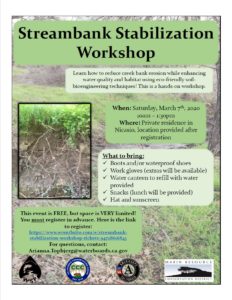
If you live next to a stream, a typical problem experienced is creek bank erosion. Soil bioengineering includes many biotechnical techniques that combine plant materials and soil to accomplish bank stabilization, erosion control, and improve habitat and water quality. This approach has many benefits over “traditional” erosion control methods that include the following but are not limited to:
– It is cost effective: Many of these techniques can be done by homeowners. Willow stakes can be locally harvested. It is cheaper in relations to long-term maintenance when compared to the traditional structural, hard engineering techniques such as rip rap, retaining walls and/or concrete.
– Long-term stability: Planting riparian vegetation can offer long-term protection against erosion due to roots having similar to greater strength than concrete. Roots can absorb erosive energy from the stream without deflecting the problem to another section of the creek bank or channel. Rooting can also quickly control channel incision.
– Improve habitat for wildlife: Riparian vegetation provides food and shelter for wildlife. When trees are established, they provide canopy cover over the channel, which keeps the water temperatures cool, and allows stream life to thrive.
Date: Saturday, March 7th 2020
~Plant, Protect, and Prosper~ Marin Municipal Water District is holding a Habitat Restoration day!
Their AmeriCorps members (with the Watershed Stewards Program) cordially invite YOU to come join in on planting willow stakes in order to protect salmon habitat and prevent erosion. Willows are a native riparian species (growing near and around waterways) that provide a multitude of benefits to water quality and provide improved habitat conditions for federally listed salmonid species found in the Lagunitas Creek watershed. Come check out a major restoration project success along the Tocaloma Reach to learn more and lend a helping hand with planting willows!
Date: Saturday, January 25th
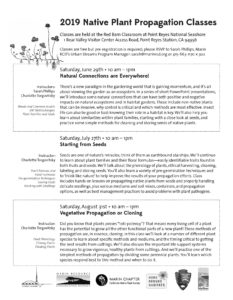 “Native Plants, and Invasive Plants, and Propagation, Oh My!”
“Native Plants, and Invasive Plants, and Propagation, Oh My!”
___________________________________________________________________________
WORKSHOPS and FIELD TRIPS
There are a plethora of opportunities to get involved and learn with the Master Gardeners in Marin. Click HERE to see what’s up and coming ranging anywhere from learning how to compost, planting with natives to planting an incredible edible lawn and so much more!
The Marin Chapter of CA Native Plant Society organizes regular hikes and field trips to learn more about the local flora of Marin County and to enjoy the multitude of trails to hike with fellow enthusiasts. Click HERE to learn more about what’s up and coming!
___________________________________________________________________________
PRESENTATIONS
CA Coastal Permitting Process, Navigating the Environmental Compliance Process in Coastal CA
Restoration Project Process Presentation by Delaware Riverkeeper Network, Riparian Buffer and Upland Restoration with Woody Species
Marin Municipal Water District’s Power Point Presentations given at the Salmon & Banks Educational Evening on July 2, 2015;
MMWD_Lagunitas Salmon Trends_2015
___________________________________________________________________________
PAST OPPORTUNITIES
Building a Rain Garden, Together!
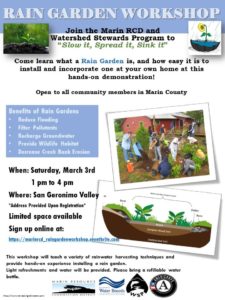 Marin Residents! Did you know that by harvesting rainwater, you can;
Marin Residents! Did you know that by harvesting rainwater, you can;
- Reduce flooding
- Filter pollutants
- Recharge groundwater
- Provide wildlife& pollinator habitat
- Decrease creek bank erosion
- Save money on water
Marin RCD’s Urban Streams Program and SF Regional Water Quality Control Board’s AmeriCorps members carried out a FREE, fun, educational, hands-on workshop to learn about the various ways you can harvest rainwater and everyone had an opportunity to build a rain garden during that day… in the rain!
___________________________________________________________________________
Presentation for Gallinas Watershed Council: Managing Urban Streams with Guest Speaker Sarah Phillips, Marin RCD
Gallinas Watershed Council invited and hosted a presentation from Sarah Phillips, Marin Resource Conservation District’s Urban Streams Program Manager, about how to manage urban streams in Marin County. Sarah talked about “Managing Urban Streams in Marin- Conveyance & Habitat Preservation” and go over the new URBAN CREEK MANAGEMENT BEST PRACTICES GUIDE. And shared about the delicate balance between providing flow conveyance to reduce flooding while still maintaining habitat integrity for wildlife in Marin that depends on a healthy, thriving riparian corridor.
___________________________________________________________________________
PLANTING THE FLOODPLAINS WITH MMWD
Watershed Stewards Program members hosted a planting event on December 16th with Marin Municipal Water District. The AmeriCorps members led volunteers to plant native plants near large woody debris structures that have recently been installed in Lagunitas Creek to help stabilize the soil and create more habitat. These woody debris structures were put in the creek to provide shelter for juvenile salmonids including Coho Salmon, Chinook Salmon, and Steelhead Trout. The native plants that naturally occur adjacent to streams, creeks, and rivers – referred to as riparian habitat – not only play an important role in the life cycle of salmonids, they help to support an abundance of other wildlife species as well. Their efforts to revegetate these areas will improve the water quality and overall health of our watershed. Click HERE to learn more!
___________________________________________________________________________
FREE WORKSHOP: Streamlining CEQA Permitting Process for Restoration Projects
Marin Resource Conservation District (RCD) and Prunuske Chatham, Inc. offered two free workshops for you to learn about our Permit Coordination Program (PCP) and how it or similar programs may offer you support with regard to expediting the CA Environmental Quality Act process for restoration and conservation projects. Marin RCD was able to host these workshops thanks to a grant awarded by the North Bay Watershed Association (NBWA) http://nbwatershed.org/.
Workshop Details
- Thursday, September 14th at Novato Sanitary District. Click HERE for agenda.
- Thursday, September 28th at Marin County Civic Center. Click HERE for agenda.
___________________________________________________________________________
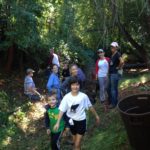 MURPHY CREEK CLEAN-UP: Saturday, September 30th!
MURPHY CREEK CLEAN-UP: Saturday, September 30th!
This was the third annual clean-up event in the Murphy Creek watershed, led by residents taking the initiative and responsibility for their creek side properties by removing litter for water quality and debris to reduce the risk of flooding.
___________________________________________________________________________
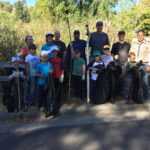 SLEEPY HOLLOW CREEK CLEAN-UP: Saturday, October 7th!
SLEEPY HOLLOW CREEK CLEAN-UP: Saturday, October 7th!
We met at the Sleepy Hollow Community Center for the annual event which is fun for all, especially the youngsters as this is the Cub Scouts’ annual service project and this year the Boy Scouts will also be joining in. We will be learning about water quality, steelhead trout and aquatic bugs, then enter the creek to remove non-native invasive species and litter together as a team.
___________________________________________________________________________
Salmonid Restoration Federation’s Coho Confab Conference
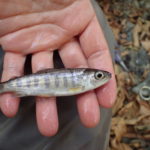
Held at the Mattole Grange in Petrolia, CA within the Lost Coast region, one of the largest wilderness areas and the longest stretch of undeveloped coastline in the continental US, on the Mattole River!
Salmonid Restoration Federation, in cooperation with the California Department of Fish and Wildlife, Mattole Restoration Council, Mattole Salmon Group, and Sanctuary Forest, held workshops and tours of off-channel slough restoration, forest and fuels reduction projects, water conservation practices, stream bank stabilization, large woody debris placement, and groundwater recharge projects.
Dates: August 24th-August 26th, 2017
___________________________________________________________________________
Fairfax Creek Clean-Up
 The annual Fairfax Creek Clean-Up that took place on Saturday, July 15th was a success! With 22 volunteers, over 2 cubic yards of litter removed and 3 reaches of the creek assessed and cleaned, the town of Fairfax and its residents can rest assured that their creek is looking in good shape! Thanks to the Town of Fairfax and Sustainable Fairfax for inviting Marin RCD‘s Urban Streams Program Manager and County Flood Control District to lead the day. We started with some great education around watersheds, water quality and flooding then got to work! Keep an eye out for next year’s creek clean-up event. Special thanks to Supervisor Katie Rice for joining in and leading the bicycling team to remove litter along the roadways and creek banks!
The annual Fairfax Creek Clean-Up that took place on Saturday, July 15th was a success! With 22 volunteers, over 2 cubic yards of litter removed and 3 reaches of the creek assessed and cleaned, the town of Fairfax and its residents can rest assured that their creek is looking in good shape! Thanks to the Town of Fairfax and Sustainable Fairfax for inviting Marin RCD‘s Urban Streams Program Manager and County Flood Control District to lead the day. We started with some great education around watersheds, water quality and flooding then got to work! Keep an eye out for next year’s creek clean-up event. Special thanks to Supervisor Katie Rice for joining in and leading the bicycling team to remove litter along the roadways and creek banks! 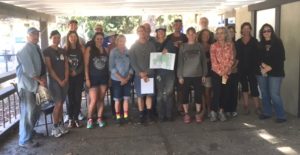
___________________________________________________________________________
Cal-IPC (California Invasive Plant Council) Training
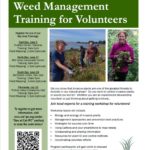 Cal-IPC is held a Weed Management for Volunteers Training throughout the Bay Area. The opportunity included identifying and learning about invasive species then out to the field to learn how to map occurrences and remove properly. It was held on Saturday, June 17 at the Mill Valley Community Center. Click HERE to learn more!
Cal-IPC is held a Weed Management for Volunteers Training throughout the Bay Area. The opportunity included identifying and learning about invasive species then out to the field to learn how to map occurrences and remove properly. It was held on Saturday, June 17 at the Mill Valley Community Center. Click HERE to learn more!
___________________________________________________________________________
CNPS’s Marin Chapter Conducted Another Great Native Plant Week!
___________________________________________________________________________
“Salmon in Marin: Current Status and Restoration Efforts” MMWD’s famous Aquatic Ecologist, Eric Ettlinger, presented about Marin County’s salmon and steelhead, how they fared 2016-2017’s floods, and the steps being taken to ensure their long-term survival. Eric provided a fascinating introduction to Marin County’s salmonid populations, monitoring efforts being conducted by the Marin Municipal Water District, local impacts on fish habitat, and ongoing restoration efforts being conducted in the watershed.
___________________________________________________________________________
Soil Bioengineering Workshop taught by Dr. Ann Riley, Sarah Phillips and RWQCB’s AmeriCorps members took place on Saturday, January 28, 2017 at Sir Francis Drake High School! We taught about Best Management Practices (BMPs) for nature-based creek bank stabilization in Marin. Click HERE to view the flyer. It was a collaborative partnership including the following partners;
- SF Regional Water Quality Control Board (SFRWQCB)
- MCSTOPPP (Marin County Stormwater Pollution Prevention Program)
- Friends of Corte Madera Creek Watershed Group
- WSP AmeriCorps Program
- CA Urban Streams Partnership
- Sir Francis Drake High School
- RePurpose
- Marin Resource Conservation District
___________________________________________________________________________
Restoration Day with Watershed Stewards Project AmeriCorps Program, Marin Municipal Water District, and the Marin RCD happened on Saturday, June 18th from 9 am-1 pm in Woodacre, CA. We celebrated summer with willow reed crafting, English ivy removal, and education on restoration in effort to enhance habitat for listed species such as the coho salmon, steelhead trout and CA freshwater shrimp! Families with children 8+ were invited to join and a raffle was held!
On May 31, 2016 there was a public program at San Geronimo Community Presbyterian Church. The group looked at color slides of Inverness Vision Fire and other firefighting actions. They heard about how to prevention and evacuation advice from Fire Officials and learned about preparation and response strategies. Presented by SGV Stewards For Info email info@sgvstewards.org
___________________________________________________________________________
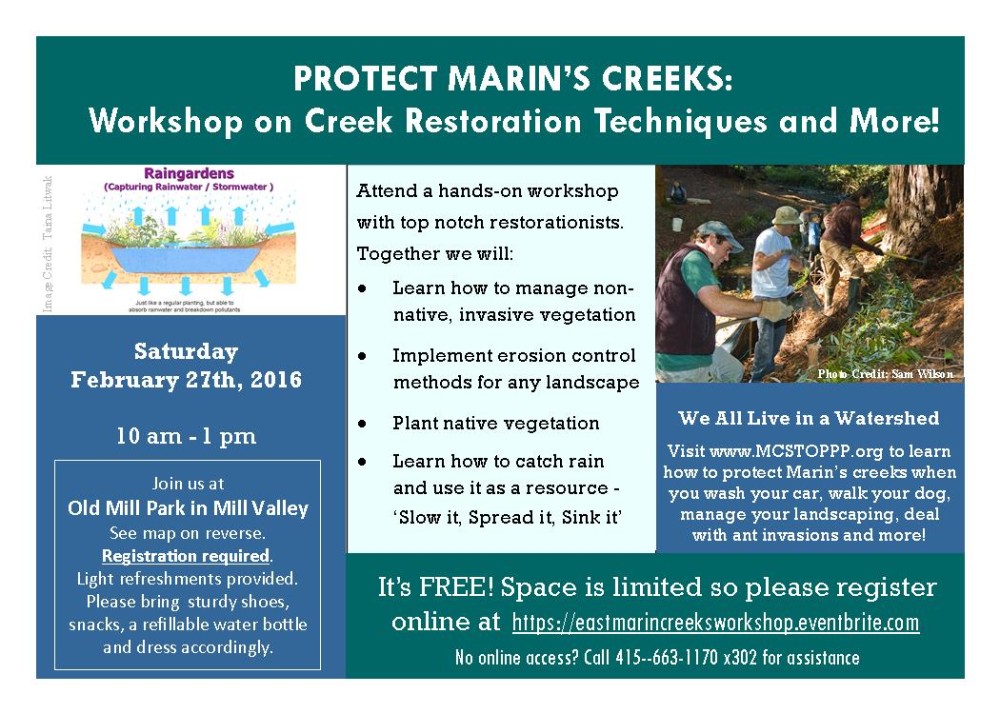 On February 27th, we had a successful and maxed out hands-on workshop in Mill Valley free for residents led by creek restoration and design specialists; John Parodi with Point Blue Conservation Science, Harold Appleton with Prunuske Chatham Inc., Marin County Stormwater Pollution Prevention Program (MCSTOPPP) and Marin Resource Conservation District (Marin RCD). Participants who pledged to share information on how to protect Marin’s creeks received a goodie bag full of valuable resources and native vegetation to bring home to plant.
On February 27th, we had a successful and maxed out hands-on workshop in Mill Valley free for residents led by creek restoration and design specialists; John Parodi with Point Blue Conservation Science, Harold Appleton with Prunuske Chatham Inc., Marin County Stormwater Pollution Prevention Program (MCSTOPPP) and Marin Resource Conservation District (Marin RCD). Participants who pledged to share information on how to protect Marin’s creeks received a goodie bag full of valuable resources and native vegetation to bring home to plant.
- Implemented erosion control methods for any landscape
- Learned how to catch rain and use it as a resource —‘Slow it, Spread it, Sink it’
- Learned about managing non-native, invasive vegetation
- Aquired effective techinques for planting native plants
- Collaborated to protect Marin’s creeks
___________________________________________________________________________
The Environmental Forum held classes on CARBON CAPTURE STRATEGIES with John Wick and Dr. Jeffrey Creque talking about carbon farming and new studies recently released about riparian carbon sequestration among other topics and strategies. First lecture was on Wednesday, January 13th from 7p-9p at the First Presbyterian Church at 1510 5th Ave. San Rafael, CA. The second lecture was on Saturday, January 23rd 9a-12p at the Bay Model Visitor Center at 2100 Bridgeway, Sausalito, CA. Click HERE to view the flyer.
___________________________________________________________________________
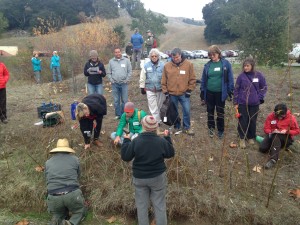 Erosion Control and Soil Bioengineering Workshop took place on December 5th at the Spirit Rock Center. Marin RCD and MCSTOPPP partnered to bring you several of the Bay Area’s top restorationists for a hands-on, how-to workshop with Dr. Ann Riley who is the author of Restoring Streams in Cities, the executive director of the Waterways Restoration Institute and a watershed and river restoration advisor for the San Francisco Regional Water Quality Control Board. We also learned from John Parodi, Restoration Program Manager for STRAW (Students and Teachers Restoring a Watershed) and Harold Appleton with Prunuske Chatham, Inc. They taught participants about shaded floodplain habitat enhancement through the planting of selected native species, how to prevent erosion on slopes and how to repair eroding creek banks with soil bioengineering. Check out THIS VIDEO to learn more on soil bioengineering. Thanks to the 56 folks that joined us that day! Click HERE to view the flyer. To read a write-up about the event from the San Geronimo Valley Planning Group’s December newsletter, click HERE and look at page 3.
Erosion Control and Soil Bioengineering Workshop took place on December 5th at the Spirit Rock Center. Marin RCD and MCSTOPPP partnered to bring you several of the Bay Area’s top restorationists for a hands-on, how-to workshop with Dr. Ann Riley who is the author of Restoring Streams in Cities, the executive director of the Waterways Restoration Institute and a watershed and river restoration advisor for the San Francisco Regional Water Quality Control Board. We also learned from John Parodi, Restoration Program Manager for STRAW (Students and Teachers Restoring a Watershed) and Harold Appleton with Prunuske Chatham, Inc. They taught participants about shaded floodplain habitat enhancement through the planting of selected native species, how to prevent erosion on slopes and how to repair eroding creek banks with soil bioengineering. Check out THIS VIDEO to learn more on soil bioengineering. Thanks to the 56 folks that joined us that day! Click HERE to view the flyer. To read a write-up about the event from the San Geronimo Valley Planning Group’s December newsletter, click HERE and look at page 3.
___________________________________________________________________________
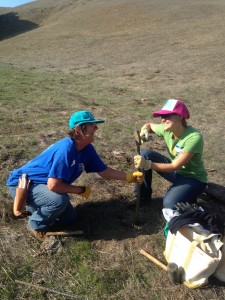
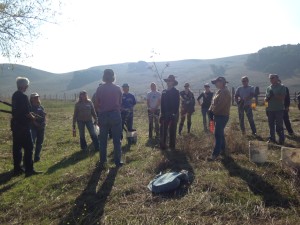 Willow Staking Work Day took place on Saturday, November 14th. Sarah Phillips and Sally Gale with the Marin RCD in Chileno Valley taught a hands-on approach on how to restore riparian habitat with the use of willows! Thanks to the 15 hard workers that helped out that day and a big THANKS to Marin Conservation League for co-sponsoring the event with the Marin RCD. Click HERE to view the flyer.
Willow Staking Work Day took place on Saturday, November 14th. Sarah Phillips and Sally Gale with the Marin RCD in Chileno Valley taught a hands-on approach on how to restore riparian habitat with the use of willows! Thanks to the 15 hard workers that helped out that day and a big THANKS to Marin Conservation League for co-sponsoring the event with the Marin RCD. Click HERE to view the flyer.
___________________________________________________________________________
Rainwater Harvesting at San Domenico School. Sarah Phillips, Urban Streams Coordinator with the Marin RCD and Dan Carney, Water Conservation Program Manager with the Marin Municipal Water District taught a hands-on approach to water conservation. Topics covered included; active versus passive rainwater harvesting for water conservation, stormwater pollutant filtration through passive systems, ground water recharge and flood water management! The successful event was packed with 30 participants and was held on Saturday, October 24th in the school’s garden at the back of the property.
___________________________________________________________________________
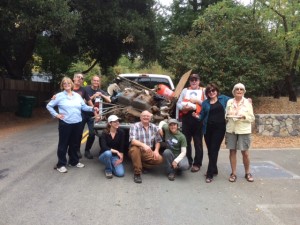
A few of the volunteers posing afterward with a truck full of trash removed from San Geronimo Creek.
Creek Clean-Up Event with San Geronimo Valley Stewards on Saturday, October 17th was a great success with about 14 volunteers! We focused on areas near the Forest Knolls post office, Lagunitas Bridge, The Papermill Saloon and Mountain View. Volunteers learned about aquatic invasive species prevention and identification as well as the salmonid life cycle. To view the flyer, click HERE!
___________________________________________________________________________
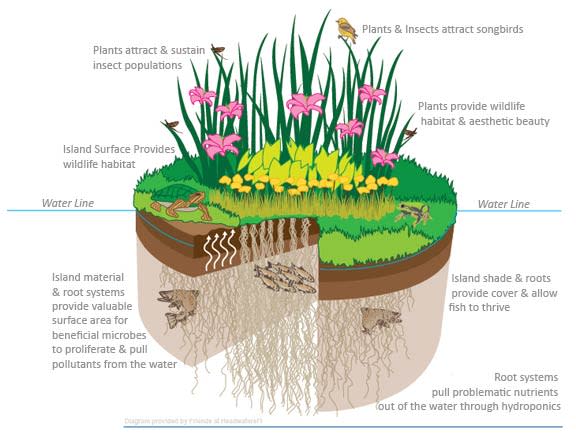
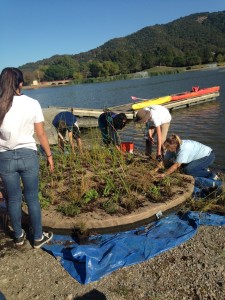 The Civic Center Watershed Restoration group and the Gallinas Watershed Council launched their Floating Island during the Bioneers Conference to help clean/remediate the impaired water in the lagoon on Friday, October 16th. The event made the front page of the Marin IJ and was well-attended! Supervisor Connolly attended and spoke at the beginning of the launch. The audience was invited to help plant the islands with selected native wetland species that were donated by the Watershed Nursery in Richmond. If you wish to contribute, go to their indiegogo campaign page and contribute what you can by clicking HERE.
The Civic Center Watershed Restoration group and the Gallinas Watershed Council launched their Floating Island during the Bioneers Conference to help clean/remediate the impaired water in the lagoon on Friday, October 16th. The event made the front page of the Marin IJ and was well-attended! Supervisor Connolly attended and spoke at the beginning of the launch. The audience was invited to help plant the islands with selected native wetland species that were donated by the Watershed Nursery in Richmond. If you wish to contribute, go to their indiegogo campaign page and contribute what you can by clicking HERE.
___________________________________________________________________________
Murphy Creek Clean-Up with local residents, Marin RCD and the County’s Flood Control District!
On October 10th, about 20 members of the Kentfield community came together to improve the conditions of their creek by removing trash and recycling that would otherwise have impaired the water quality of the watershed and also impact the San Pablo Bay as that’s where Murphy Creek finds its way once it confluences with Corte Madera Creek at the College of Marin campus. Additionally, we cleared any debris that would impede flow while keeping in mind habitat value of riparian species, balancing flow conveyance with habitat integrity. We also transplanted native Oregon ash (Fraxinus latifolia) trees so that they could thrive along the tops of the creek bank to improve bank stability and road run-off filtration.
___________________________________________________________________________
Sleepy Hollow Creek Clean-Up with the Marin RCD, Cub
Scouts and Creek Committee!
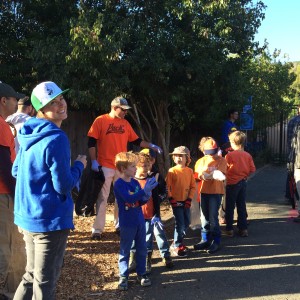
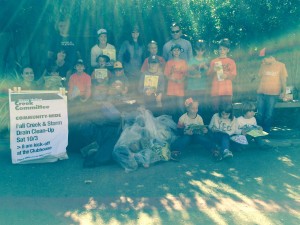 On October 3rd, about 40 members of the Sleepy Hollow community came together with the local Cub Scouts group to remove trash and recycling from the creek that would otherwise have impaired the water quality of the watershed and also impact the San Pablo Bay as that’s where Sleepy Hollow Creek finds its way once it confluences with Corte Madera Creek. Additionally, we cleared any debris that would impede flow while keeping in mind habitat value of riparian species, balancing flow conveyance with habitat integrity.
On October 3rd, about 40 members of the Sleepy Hollow community came together with the local Cub Scouts group to remove trash and recycling from the creek that would otherwise have impaired the water quality of the watershed and also impact the San Pablo Bay as that’s where Sleepy Hollow Creek finds its way once it confluences with Corte Madera Creek. Additionally, we cleared any debris that would impede flow while keeping in mind habitat value of riparian species, balancing flow conveyance with habitat integrity.
__________________________________________________________________________
Healthy Creeks Workshop with Marin RCD and the Watershed Forum!
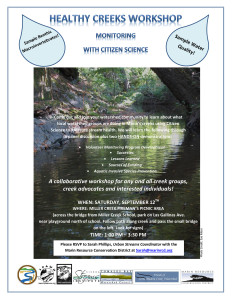 Marin RCD and the Watershed Forum had a successful workshop with 40 members from the watershed community coming out to learn about what local watershed groups are doing in Marin’s creeks using Citizen Science to measure stream health. It took place on Saturday, September 12th from 1:00p-3:30p on Miller Creek. We learned the following through a panel discussion plus two HANDS-ON sampling activities;
Marin RCD and the Watershed Forum had a successful workshop with 40 members from the watershed community coming out to learn about what local watershed groups are doing in Marin’s creeks using Citizen Science to measure stream health. It took place on Saturday, September 12th from 1:00p-3:30p on Miller Creek. We learned the following through a panel discussion plus two HANDS-ON sampling activities;
- Volunteer Monitoring Program Development
- Successes
- Lessons Learned
- Sources of Funding
- Aquatic Invasive Species
- How to Measure Water Quality
- How to Sample Benthic Macroinvertebrates (important food source of aquatic species)
___________________________________________________________________________
Salmon & Eroding Creek Banks! 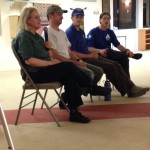 The Marin RCD held a free educational evening to learn more about salmon habitat needs, current population data in west Marin and how best to repair and restore eroding creek banks with nationally recognized specialists. Click HERE to see the flyer! The event was a hit with over 50 attendees and great feedback from both the speakers and those that attended. Many thanks to the Spirit Rock Center for hosting the event, to Eric Ettlinger at MMWD with Vincent and Patrick with Watershed Stewards Project for their presentations (PDFs of their presentations can be found above, under ‘Presentations’) and to Dr. Riley with the Regional Water Quality Control Board! The Marin RCD anticipates organizing another one in Southern Marin during Spring, 2016!
The Marin RCD held a free educational evening to learn more about salmon habitat needs, current population data in west Marin and how best to repair and restore eroding creek banks with nationally recognized specialists. Click HERE to see the flyer! The event was a hit with over 50 attendees and great feedback from both the speakers and those that attended. Many thanks to the Spirit Rock Center for hosting the event, to Eric Ettlinger at MMWD with Vincent and Patrick with Watershed Stewards Project for their presentations (PDFs of their presentations can be found above, under ‘Presentations’) and to Dr. Riley with the Regional Water Quality Control Board! The Marin RCD anticipates organizing another one in Southern Marin during Spring, 2016!
___________________________________________________________________________
The Green Gulch Zen Center hosted a week of restoration September 13-18, 2015 for committed work on their trails and creek restoration projects. Participants were invited to stay at their guest house with amazing local meals provided, both free of charge. The Zen Center hosts complimentary lunches for their volunteers before the work begins, planting native riparian vegetation at its newly restored creek channel designed by Prunuske Chatham, Inc. For more information about the project or to sign up for emails about future work days, contact Sukey Parmelee at sukey.parmelee@sfzc.org.
___________________________________________________________________________
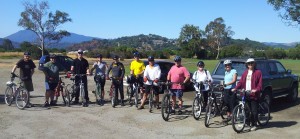 The Gallinas Watershed Council is organized a successful 5th Annual Bike the Watershed event! Along the way they stopped at a few locations to discuss the watershed and its inhabitants. Click HERE or see below to learn more about this fun annual event.
The Gallinas Watershed Council is organized a successful 5th Annual Bike the Watershed event! Along the way they stopped at a few locations to discuss the watershed and its inhabitants. Click HERE or see below to learn more about this fun annual event.
___________________________________________________________________________
Gallinas Watershed Council (GWC) recently tabled at the Marin County Fair on July 1st with their popular Watershed Model. They also had Ed from Floating Islands West demonstrating what a floating island can do to improve water quality at the Civic Center Lagoon! You can view a video about the floating island here; https://www.youtube.com/watch?t=482&v=NvxAJ2Il4FY.
___________________________________________________________________________
11th Annual Kiss and Release This fun and exciting event was organized by Tiburon Salmon Institute on May 16th at Blackie’s Pasture in Tiburon with Marin’s watershed groups like Mill Valley StreamKeepers, Watershed Alliance of Marin, and many others had booths set up to educate YOU on their good works in the watersheds! It included the release of over 2,000 baby salmon, live music and a BBQ! For more information about Tiburon Salmon Institute, click HERE.
___________________________________________________________________________
Friends of Corte Madera Creek Watershed had an Earth Day Work Day on Saturday, April 18th. They worked at the College of Marin Ecological Study Area.
___________________________________________________________________________
CA Native Plant Society’s Marin Chapter celebrated Native Plant Week from April 11th-19th with all sorts of fun activities open to the public.
___________________________________________________________________________
Stanford Strategies for Ecology Education, Diversity, and Sustainability (SEEDS) met on Saturday, April 18th at Lake Lagunitas . Faculty, students and community members participated in a survey of local biodiversity! The festivities included bird watching, breakfast, tracking all animals, and identifying plants. Questions, contact Amy Zuckerwise at amyz@stanford.edu or (818) 451-9625.
___________________________________________________________________________
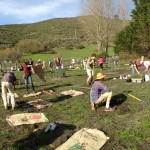 The Green Gulch Zen Center had a volunteer event on Sunday, February 15th at 2 pm to celebrate Arbor Day/Restoration Day. The Zen Center hosts complimentary lunches for their volunteers before the work begins, planting native riparian vegetation at its newly restored creek channel designed by Prunuske Chatham, Inc. Plantings are directed by Students and Teachers Restoring A Watershed (STRAW). Over 150 individual plants consisting of at least 11 native species were planted on February 15th! For more information about the project or to sign up for emails about future work days, contact Sukey Parmelee at sukey.parmelee@sfzc.org.
The Green Gulch Zen Center had a volunteer event on Sunday, February 15th at 2 pm to celebrate Arbor Day/Restoration Day. The Zen Center hosts complimentary lunches for their volunteers before the work begins, planting native riparian vegetation at its newly restored creek channel designed by Prunuske Chatham, Inc. Plantings are directed by Students and Teachers Restoring A Watershed (STRAW). Over 150 individual plants consisting of at least 11 native species were planted on February 15th! For more information about the project or to sign up for emails about future work days, contact Sukey Parmelee at sukey.parmelee@sfzc.org.
___________________________________________________________________________
Friends of Corte Madera Creek Watershed had a volunteer event on Sunday, February 22nd removing non-native noxious plants at a fish passage project site. Click HERE for more details!
___________________________________________________________________________
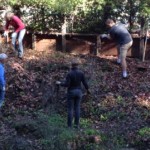 On November 15th, Sleepy Hollow Homeowner Association partnered with Prunuske Chatham, Inc. and STRAW to provide volunteers with a hands-on experience working with bio-technical erosion control techniques that included: installing a willow wattle and planting willow starts to shore up an eroded bank, and clearing non-natives and planting an elderberry tree along with native grasses to hold soil in place. There was also information provided on permits required for working near watercourses, preventing soil from entering creeks during restoration projects, water quality factors (e.g. shade, nutrient loading), various erosion control techniques, choosing native plants (how, where, why), how to plant and protect native plants, soils, yard waste, fertilizer, weeds, local nurseries and more. To stay updated, contact Eric Riemer at 415-453-4818 or eric_riemer@comcast.net on the Sleepy Hollow HOA Creek Committee.
On November 15th, Sleepy Hollow Homeowner Association partnered with Prunuske Chatham, Inc. and STRAW to provide volunteers with a hands-on experience working with bio-technical erosion control techniques that included: installing a willow wattle and planting willow starts to shore up an eroded bank, and clearing non-natives and planting an elderberry tree along with native grasses to hold soil in place. There was also information provided on permits required for working near watercourses, preventing soil from entering creeks during restoration projects, water quality factors (e.g. shade, nutrient loading), various erosion control techniques, choosing native plants (how, where, why), how to plant and protect native plants, soils, yard waste, fertilizer, weeds, local nurseries and more. To stay updated, contact Eric Riemer at 415-453-4818 or eric_riemer@comcast.net on the Sleepy Hollow HOA Creek Committee.
